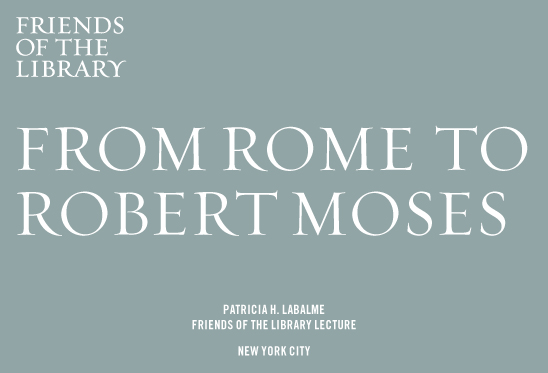Thomas J. Campanella – From Rome to Robert Moses

Though virtually unknown today, no landscape architects played a greater role in shaping American space in the twentieth century than Gilmore D. Clarke and Michael Rapuano (1930 Fellow), whose forty-year partnership Laurie Olin has called “one of the most fruitful collaborations in American design history.”
Clarke and Rapuano were educated in the Beaux-Arts style but practiced at the edge of modernity, designing the first modern highways in the world and using them to create the first park system of the motor age. This work was emulated from Germany to China and became the model that Robert Moses used to modernize metropolitan New York during the New Deal. Clarke and Rapuano themselves provided much of the design genius that enabled Moses to build, by the 1950s, a legacy of parks and public works unmatched since Haussmann’s transformation of Paris. Among their works are Riverside, Orchard Beach, Battery, Cadman Plaza, Astoria, Marine, and Jacob Riis Parks, the Brooklyn War Memorial, the Central Park Conservatory Gardens, the Belt, the Henry Hudson and Grand Central Parkways, and the master plan for the 1939 World’s Fair.
This lecture by Thomas J. Campanella (2011 Fellow) will survey the forgotten legacy of Clarke and Rapuano, showing how Rapuano’s studies at the American Academy in Rome in the late 1920s enabled him to develop a lean and economical “public-works Baroque” spatial aesthetic that complemented well the Anglo-Romantic heritage of the Olmsted era and became a signature of both the Moses era and the city itself.
A reception will follow the lecture. Seating is limited, and reservations are required.